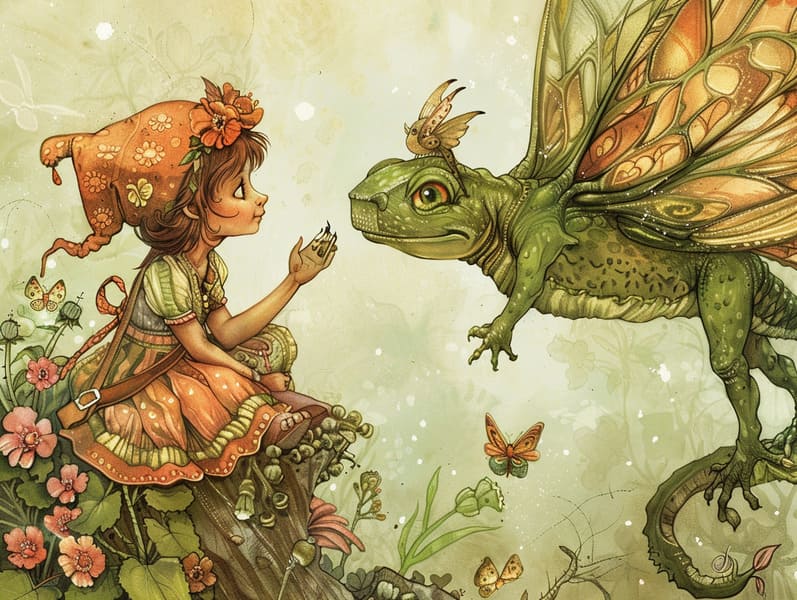
Nighttime is a treasured time for parents and children. It’s a opportunity to wind down, hug close, and experience the enchantment of bedtime narratives.
For decades, evening stories for little ones have been a prized habit, offering more than just a way to slumber. They provide an chance for connection, education, and fostering creativity.
The Meaning of Bedtime Stories
Bedtime stories for kids mean more than a way to end the day. They play a essential role in a child’s maturation and in building the guardian-child tie. Here’s why they make a difference:
1. Quality Time: Storytime before sleep fosters a special bonding moment between parents and children. It’s a moment of affection that helps children feel loved and comforted.
2. Speech and Language Skills: Listening to stories helps children develop their language acquisition. They understand new vocabulary, understand syntax, and improve their hearing and interpretative skills abilities.
3. Creative Development: Nightly stories lead them to dreamy worlds, nurturing vision. They picture characters, settings, and adventures, which ignites their creative thinking.
4. Feeling Recognition: Children’s stories often depict characters facing difficulties and states. These narratives help kids recognize and navigate their own reactions, building emotional skills.
5. Mental Development: Listening to a tale helps children develop awareness, remembering, and analytical skills. They gain to follow narratives, remember elements, and guess endings.
Incorporating Stories into Bedtime
Developing a night-time practice that incorporates reading aloud stories is straightforward and satisfying. Here’s how to establish a cherished part of your nightly ritual:
1. Choose a Relaxing Place: Opt for a relaxing place where you and your child can huddle together without disruptions. A cozy bed or a cozy reading nook works well.
2. Choose a Specific Time: Set a routine time each night for reading. Consistency helps children be accustomed and makes the ritual more sustainable.
3. Select Stories by Age: Identify tales that suit your child’s cognitive level. Little kids might appreciate visual books with straightforward tales, while more mature kids may be interested in longer stories with more complicated tales.
4. Engage with the Story: Ensure the tale be captivating by trying different accents and voices, adding special sounds, and encouraging your child to join in. Ask questions about the story to keep them engaged.
5. Set a Relaxing Mood: Turn down the lights, use soft voices, and create a calming environment to help your child ease into rest.
Where to Discover Bedtime Stories
There are countless resources where you can find perfect bedtime stories for children. Here are some places to explore:
1. Books for Kids: Go to your community library or bookstore to find a wide selection of bedtime stories for kids. Going through the books together can be a wonderful activity that also allows children to select stories that interest them.
2. Web Sources: There are many websites that offer free bedtime stories. Sites like kids' story platforms provide a variety of short stories for kids that you can print out. These sites are great for finding new and varied stories without paying.
3. Audiobooks and Apps: For nights when you’re check here too tired to read, look into audiobooks or storytelling apps. These can provide a calm narration to read your child a story, ensuring they still get their bedtime story fix. Apps often offer fun elements that can keep them engaged further.
4. Individualized Stories: Craft your own stories based on your child’s preferences. Personalized stories can be very engaging and meaningful. You can bring your child in the writing process, making them a part of the adventure.
Benefits of Brief Stories
Concise stories for kids are extremely advantageous for bedtime. They provide all the benefits of longer stories but are more concise, making them perfect for settling down before sleep. Here’s why short stories are a great choice:
1. Straightforward: Concise narratives are simple and easy for children to follow, even after a long day. They can promptly grasp the plot and enjoy the story without losing interest.
2. Quick Engagement: Brief tales quickly engage children, grabbing their involvement and curiosity. This makes them great for keeping bedtime traditions simple yet enjoyable.
3. Flexible Choices: Compact stories make possible for variety in your bedtime storytime. You can get a different story each night, keeping the habit fresh and exciting for your child.
4. Time-Saving: For busy parents, brief tales are a easy way to check children still get their nightly dose of storytelling. They fit well into a crowded schedule while still offering the full benefits of a bedtime story.
Why "Read Me a Story" Works
The simple phrase, “Tell me a story,” can unlock a world of magic for children. Saying yes to this request not only addresses a child’s desire for attention and engagement but also creates lasting recollections. Here’s why it’s charming:
1. Tie: Narrating to your child encourages a deep emotional attachment. It’s a time for affection, sharing, and bonding.
2. Heritage: Establishing a bedtime story tradition creates a beloved tradition that children anticipate every night. It’s a habit that can be passed down through generations.
3. Growing Together: As you tell tales, you’ll see your child’s advancement and advancement. Their questions, reactions, and understanding of the stories grow, offering insights into their developing minds.
4. Safe Environment: Bedtime stories provide a safe space for children to deal with emotions, face fears, and find comfort in the familiar presence of a parent.
End Thoughts
Stories for kids at bedtime are a important tool for fostering a child’s development and crafting unforgettable experiences of closeness.